What Are Business Requirements?
Business requirements are the key goals your business wants to achieve with custom software. These goals could involve improving how your business operates, reducing costs, or meeting customer needs. In simple terms, they describe what you want the software to do for your business. For example, if you want your team to work faster, the business requirement might be to develop a software tool that automates tasks. These requirements can also be shaped by your industry domain, which refers to the specific field or sector your business operates in, such as retail, healthcare, or logistics.
Business requirements are not the same as functional, non-functional, or technical requirements, although a Business Requirements Document might include these. Business requirements focus on what the software should achieve overall (the big picture). In contrast, functional requirements describe how the software should work in specific situations. Non-functional requirements cover things like the software’s security, speed, or performance. Technical requirements explain how the software will be built.
Key Components of Business Requirements

Stakeholder Needs
These are the needs and expectations of everyone involved in the project. This could include your employees, customers, and anyone else who will use the software. It’s important to understand what each group expects from the software so that it works well for them.
Strategic Objectives
These are the big-picture goals of your business that the software should help achieve. For example, if your business goal is to expand into new markets, the software could be developed to support that expansion by streamlining operations or offering new services.


Project Scope
The scope defines what the project will cover. It helps avoid “scope creep,” which is when the project grows beyond what was originally planned. Setting clear boundaries from the start ensures the software meets your business needs without adding unnecessary features.
Success Criteria
These are the ways you’ll measure if the software is successful. For example, you might set goals like saving a certain amount of time, reducing costs, or improving customer satisfaction. These criteria help you know if the software has done its job.

The Business Requirements Document (BRD)
A Business Requirements Document (BRD) is a key document that brings together all the business needs and explains them in detail. It acts like a roadmap for both you and the development team to make sure everyone is on the same page.
The BRD is used to outline the business goals, the scope of the project, and the expected outcomes. It also lists the key people involved and their roles, and it might include a SWOT analysis (strengths, weaknesses, opportunities, and threats) to help guide decisions. The BRD will also include any functional requirements (what the software should do) and success metrics (how you’ll know if it’s working).
Having a strong BRD is important because it helps prevent misunderstandings and keeps everyone focused on the same goals. It also helps reduce risks, like the project going off track or failing to meet expectations.
Case Study – Sweet Causes Business Requirements Document
Sweet Causes is a company that helps raise money for charities by placing charity collection boxes in different locations, like shops, offices, or community spaces. These boxes collect cash donations, which are later collected by Sweet Causes’ team. Their goal is to make it easy for people to support good causes while ensuring the collection process is smooth and efficient.
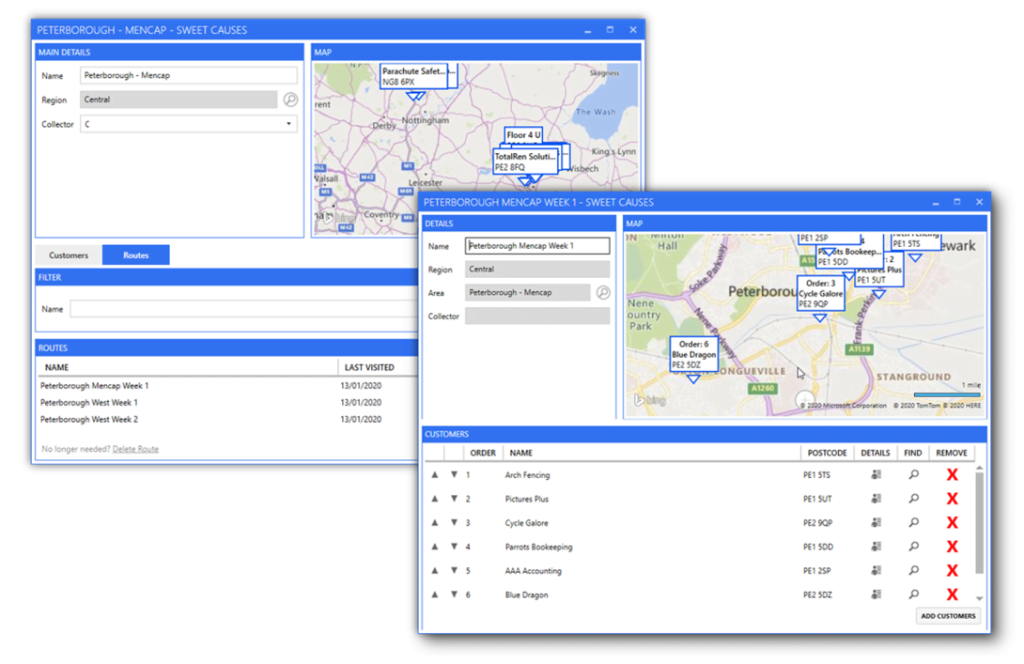
Their business needs are very specific because they involve managing a large number of collection boxes spread across different locations. For example, office staff need to plan routes for collectors to visit the right locations and make sure all collections are accounted for. The collectors, on the other hand, need a system to track their routes, log cash collected, and flag any issues like missed payments or extra box refills. Additionally, canvassers need to use the mobile app to add new companies, note where boxes have been placed, and record what each box contained.
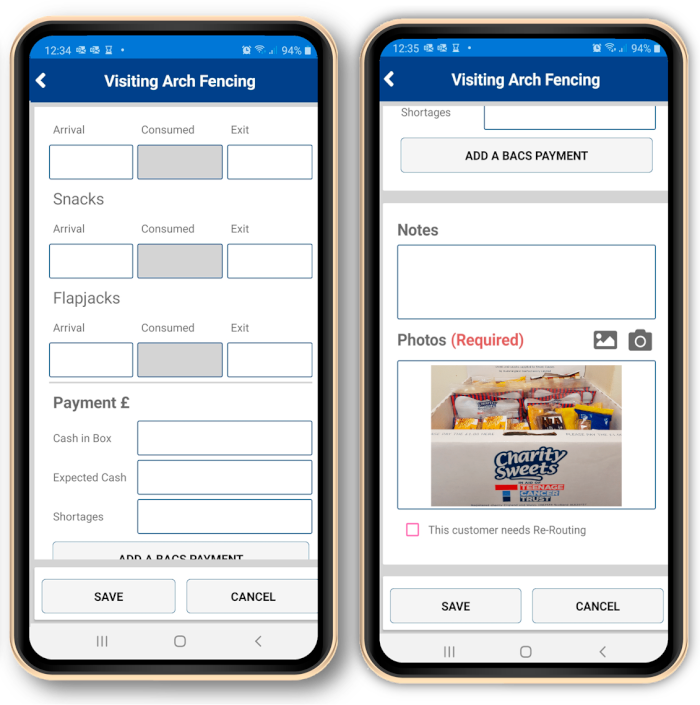
To handle these tasks, Sweet Causes needs software that is reliable, easy to use, and tailored to their unique workflow. Their requirements include a desktop application for office staff to manage routes and data, and a mobile app for collectors and canvassers to input information while they’re out in the field.
This setup helps all teams work more efficiently, keeps the charity collections organised, and ensures that the donations are properly recorded and reported.
Business Requirements
The full ‘Sweet Causes BRD’ was a comprehensive 56-page document divided into detailed sections for a mobile and a desktop application. It provided a thorough exploration of the business requirements. It also included functional and non-functional aspects, covering use cases, interface needs, wireframes, and technical considerations like security and scalability.
Here are the top 5 most important business requirements for Sweet Causes:
- Collection Box and Donation Management: The system must allow easy tracking of collection boxes at various locations and ensure donations are properly logged and recorded.
- Route Planning and Scheduling: Office staff need a tool to plan and optimise routes for collectors, ensuring all locations are visited and collections are accounted for.
- Mobile App for Field Users: The mobile app must enable canvassers and collectors to input data in real-time, including adding new companies, logging box placements, and tracking donations.
- Reporting and Data Analysis: The system should generate reports on donations, box placements, and routes, helping staff monitor collections and resolve any issues.
- Security and Data Protection: The system must ensure that all donation and personal data is securely stored and protected, complying with relevant data protection regulations.
Sweet Causes BRD – Summary and Sample Images
Summarised below are some of the functional and non-functional requirements outlined in Sweet Causes’ business requirements document. The summary includes sample images featuring a couple of diagrams and mock-ups created for different areas.
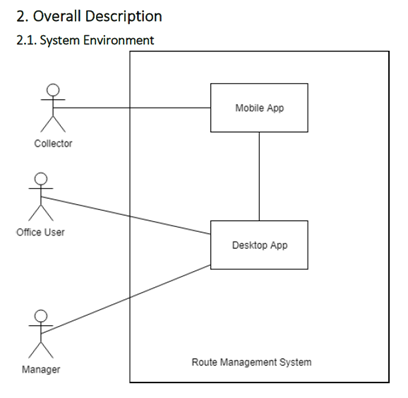
Non-Functional Requirements
- Ease of Use: Intuitive for office staff and collectors.
- Reliability: Ensure uptime and data security.
- Performance: Fast loading and data handling.
- Compatibility: Support iOS, Android, and office desktops.
- Scalability: Handle business growth.
- Connectivity: Work offline and sync seamlessly.
Functional Requirements
- Route Management: Create, assign, and update customer routes.
- Data Collection: Log cash, add customers, and record BACS payments.
- Alerts: Notify about missed payments or tasks.
- Ad-Hoc Tasks: Manage unscheduled refills.
- Records: Access historical data and generate reports.
- Mobile App: Display routes, allow clocking in/out, and log mileage.
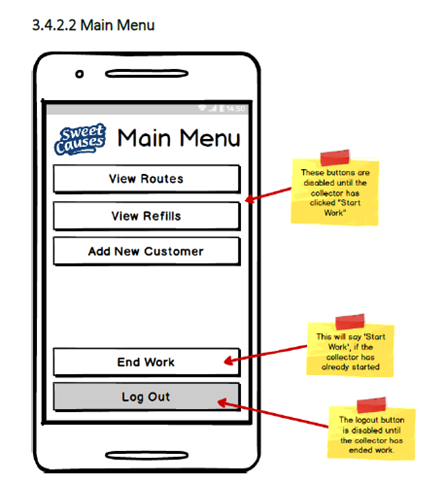
Why Business Requirements Matter in Software Development
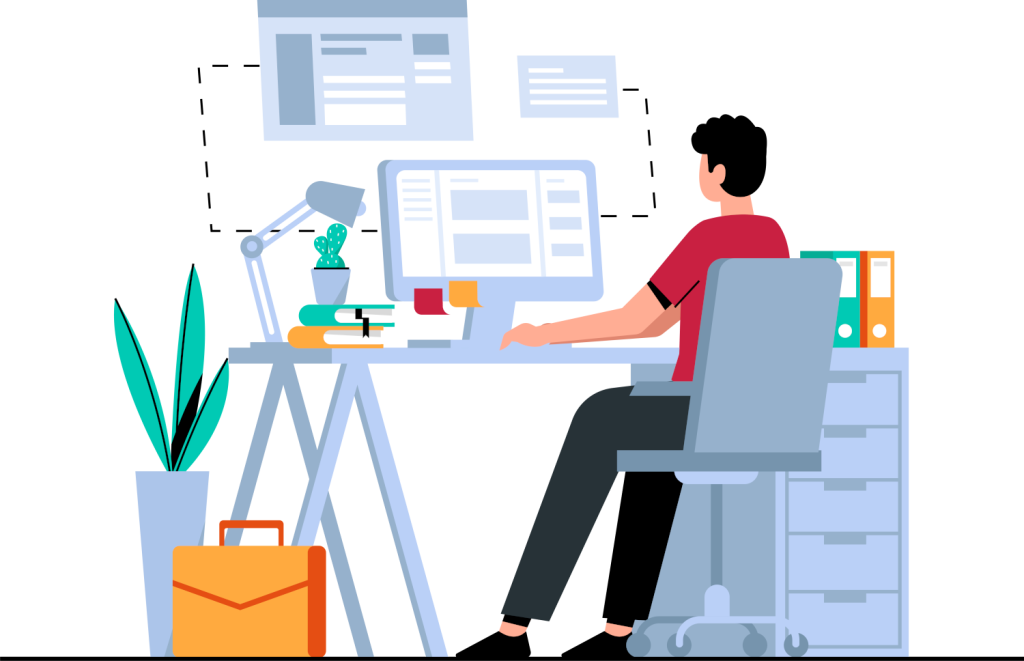
Business requirements are incredibly important because they provide a clear roadmap for the entire software development process. They help everyone involved, from the business owner to the development team, understand exactly what the software needs to achieve. By clearly defining these business requirements at the start, it’s easier to align everyone’s expectations and guide decision-making as the project moves forward. This helps ensure that the software is being built to meet the business’s goals.
Well-defined business requirements are also essential for managing resources, costs, and timelines. Without clear requirements, the project can go off track, leading to wasted time and money. By sticking to the plan laid out by the business requirements, you can avoid unnecessary delays and cost overruns. Business requirements guide us to build software that solves real-world problems. When done properly, the software will add measurable value by improving efficiency, reducing costs, or increasing revenue.
Why BSPOKE Software is Your Ideal Partner for Custom Software Development
At BSPOKE Software, we have over 15 years of experience in creating custom software for businesses like yours. What makes BSPOKE Software stand out is our deep expertise in working with clients to fully understand and define their business requirements. We carefully listen to your business needs and ensure we fully understand them before building any software. This way, we can create solutions that are perfectly aligned with your goals.

We also ensure that the development process is guided by your business objectives. We align the technical development with your business requirements. Ready to take your business to the next level with custom software? Get in touch with us today to discuss your project!
Common Pitfalls in Custom Software Projects
One of the biggest risks in custom software development is when business requirements are unclear or incomplete. If you don’t set clear business requirements, the software might not meet your business needs. This misalignment can lead to frustration, wasted resources, and a final product that doesn’t solve the right problems.
Another risk is something called “scope creep.” This occurs when the project’s goals keep expanding without proper control, leading to delays and budget overruns. You can avoid this risk by setting well-defined business requirements from the start to keep the project on track. An alternative approach is to begin with a core system that captures the essential initial requirements while remaining cost-effective. Additional features and enhancements can then be added later as your needs evolve, ensuring a flexible and efficient development process.
Conclusion: Setting Your Custom Software Project Up for Success
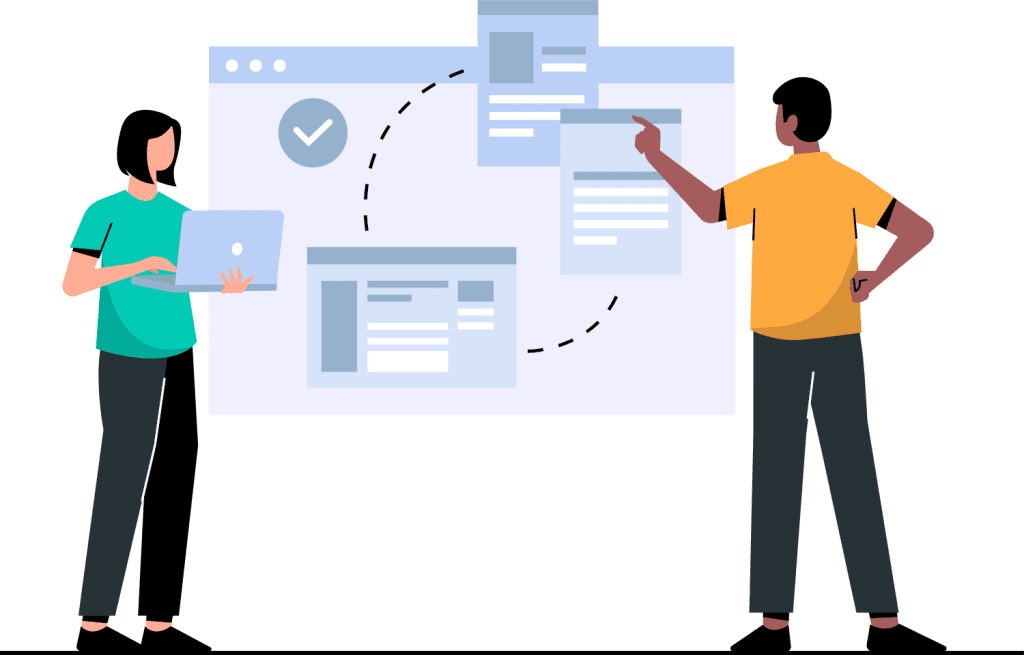
Understanding and documenting your business requirements is the first and most important step in custom software development. Clearly defining your business needs helps ensure the software is built to meet them. This keeps your project on track and delivers the results you want.
If you’re ready to build custom software that aligns perfectly with your business goals, BSPOKE Software is here to help. Get in touch with us today to talk about your project. We can turn your business needs into a customised software solution that works for you.

